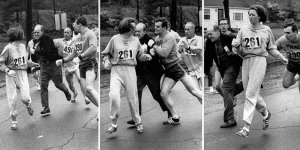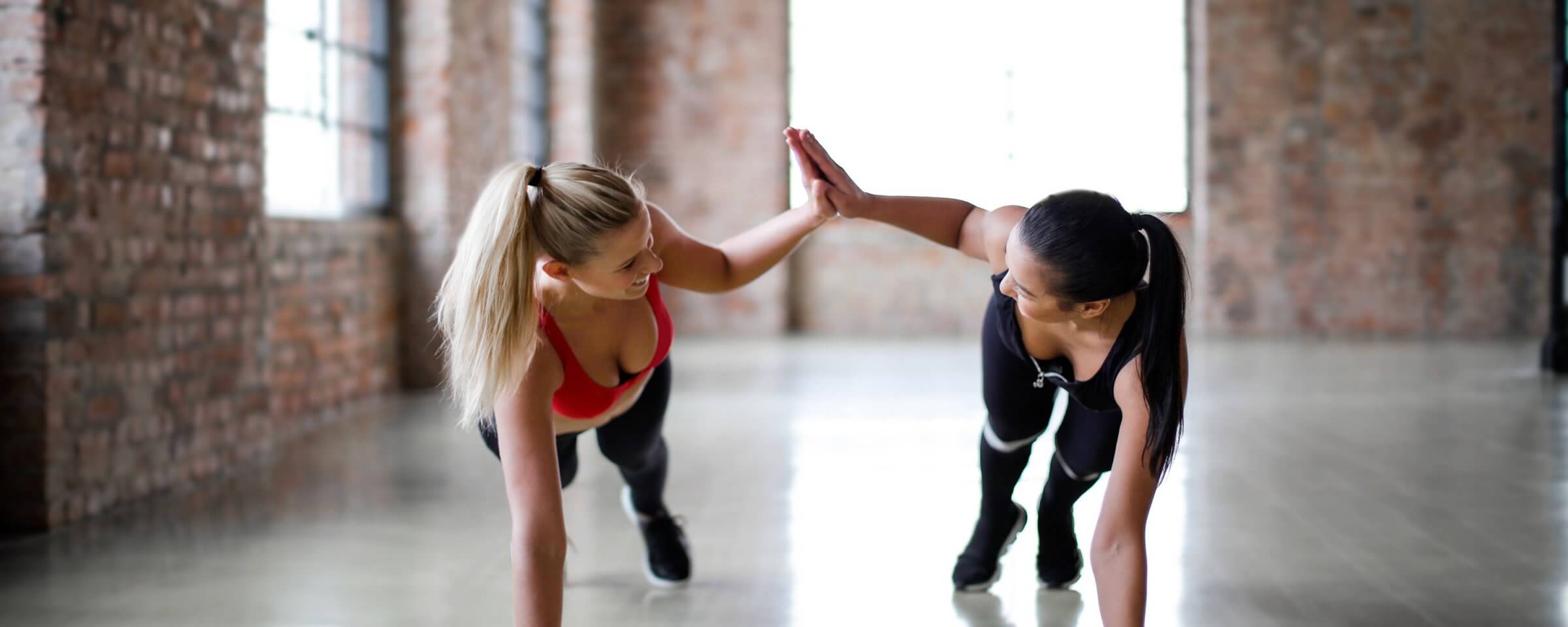Women have not featured prominently in sport for all that long. It is only since the 1970s that they have gradually come to conquer a wide variety of sports. Today, women have gained recognition in many sports, but there is still a lot of catching up to do, especially in the sports retail segment. Sports brands are no longer reaching today’s sporty women with “shrink and pink” alone. Senior Category Manager for Outdoor & Winter Sports/Textiles Verena Schledorn knows all about the developments shaping the sports and women’s sector, what women really expect from sports retailers and the products that brands are responding with to the new-found self-confidence of sporty women.
Women have only recently conquered the world of sport
Professional athletes such as Serena Williams and Lindsey Vonn are celebrated worldwide for their sporting achievements and are role models for many young women. The fact that women now hold their own in (almost) every sport today is nothing new. But it wasn’t so long ago that women were not even a part of the sports world. Of course, they wanted to be, but they were simply not allowed to attend many sporting events.

Kathrine Switzer, Boston Marathon 1967
Breaking a taboo and facing the consequences
One woman who dared to be different was the American Kathrine Switzer. In 1967, she quietly registered for the Boston Marathon using only her initials and took her place on the starting line in disguise, breaking a long-held taboo. What was that taboo, you might ask? She simply ignored the fact that the Boston Marathon only allowed male participants. Unfortunately, it only took two miles to expose her as a woman. And although the race director wanted to stop her from participating, Kathrine Switzer still managed to be the first woman to finish a marathon – with support from her male companions. Her finishing time: 4:20. Today’s women’s world record is a good two hours quicker and female participants no longer need their male companions’ assistance. Kathrine Switzer’s participation in that marathon, however, laid an important foundation for women’s acceptance in sport, with her run causing outrage at the time.
Well-being, endorphins and adrenaline
Today, sport is a natural aspect of life for many women. They take part in any number of sports at different performance levels. What has changed above all in recent years is their reason for taking part. “Women no longer run, walk, do yoga, group fitness and swimming simply to lose weight, as used to be the case. For today’s women, it is about well-being and stress relief, but also endorphins and adrenaline. Sport is part of their lifestyle. It’s no longer just about getting to size zero, but gaining a powerful, vital body,” says Verena Schledorn, Senior Category Manager for Outdoor & Winter Sports/Textiles at SPORT 2000 International.
Products for women in sports retail have been neglected for far too long
In contrast to men, women also shop more frequently for sporting goods and sports fashion and place more value on a contemporary look. This makes them an interesting target group for sports retailers. Although offers tailored towards the women’s target group are becoming broader and more diverse, there is still a lot of room for improvement. “In the outdoor sector in particular, women’s specific needs were not taken into account for a very long time,” notes Schledorn, adding: “Fortunately, the female perspective is having an increasing influence on product design in many areas.” The fit of the clothing plays an important role here. Women’s bodies come in different shapes and sizes. Nevertheless, shops usually only a carry a standard selection. Brands such as Athleta from the USA are pioneers here, tailoring the fit and look specifically to women and offering an extremely wide range.
Women have very particular life situations
If sports brands want to continue to be successful, Schledorn is convinced that the fit and the range of products for particular life situations must be more closely aligned to women: “When pregnant women want to do sport, for example, they usually have to resort to relax wear. The fact that the VELOINE brand’s Pregnancy Cycling Pants is the winner of the ISPO Brand new 2021 Award is no coincidence.” In this context, she also points out that the principle of “shrink it and pink it” – in other words, simply offering sports articles in smaller sizes and “feminine” colours – has long since ceased to be adequate. “What is needed here is a total focus on women’s requirements,” says Schledorn. Schledorn also sees an important step for sports brands in terms of female reinforcement and filling decision-making and management positions: “I think it is very important to have women playing a more active role in the decision-making process, as they know the needs of the women’s target group best from their own experience.”
How brands and sports retailers are capturing the women’s sector
Some brands and companies have already recognised the potential of women athletes and have taken steps in the right direction. For example, the well-known outdoor brands The North Face and Vaude are very committed to the issue of women in sport, offering more playful brands like Kari Traa also driving change. “It is particularly important with the women’s target group to create an emotional connection to the shop. Because women actually shop where they feel good,” says Schledorn, continuing to stress that global brands like Lululemon have long offered yoga and fitness classes and workout sessions to strengthen the connection between the shop and the customer.

Fitness-Influencers: Kayla Itsines, Pamela Reif, Sophia Thiel
Sports promotion for women is succeeding by using role models
A marketing rethink is also needed to reach women in the future. It is difficult to inspire women using established models that are quite successful with men, such as perimeter advertising in football stadiums. A woman wants brands to meet her precisely where she spends time so she can connect with the brand as effectively as possible. According to Schledorn, celebrities and influencers currently play a major role here. They integrate sport as part of their lifestyle and inspire many women around the world. Kayla Itsines, Pamela Reif or Sophia Thiel, for example, are particularly successful influencers here. They all have sporting pedigree and live sport as part of their daily lives. It is their authenticity that makes them so successful.
Specialist sports retailers can appeal to women with targeted consultation and an environment tailored to women’s needs, such as women-friendly changing facilities or departments separated by gender.
Photo credits: Andrea Piacquadio/Pexels.com




